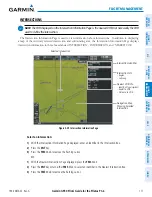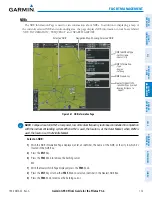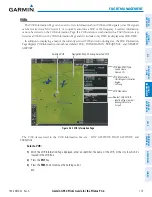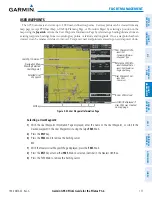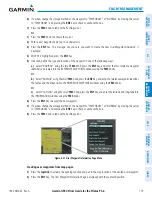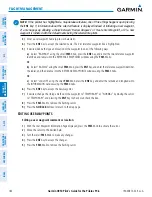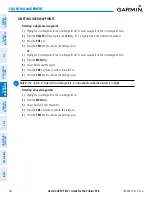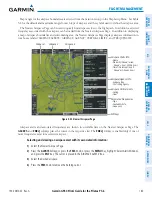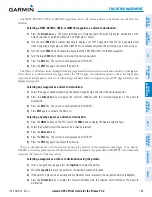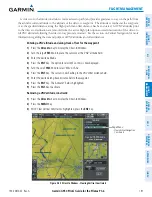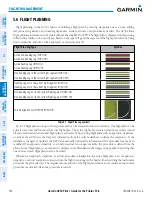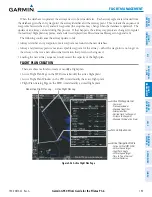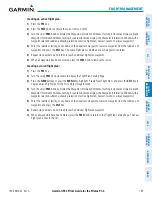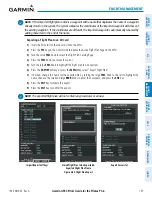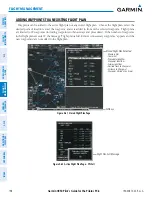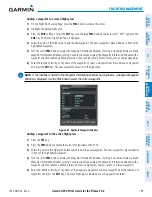
Garmin G950 Pilot’s Guide for the Pilatus PC-6
190-00870-02 Rev. A
184
FLIGHT MANAGEMENT
SY
STEM
O
VER
VIEW
FLIGHT
INSTRUMENTS
EIS
AUDIO P
ANEL
& CNS
FLIGHT
MANA
GEMENT
HAZARD
AV
OID
ANCE
AFCS
ADDITIONAL FEA
TURES
APPENDICES
INDEX
An altitude buffer is also provided which “expands” the vertical range above or below an airspace. For example,
if the buffer is set at 500 feet, and the aircraft is more than 500 feet above/below an airspace, an alert message is
not generated, but if the aircraft is less than 500 feet above/below an airspace and projected to enter it, the pilot
is notified with an alert message. The default setting for the altitude buffer is 200 feet.
Changing the altitude buffer distance setting:
1)
Use the
FMS
Knob to select the AUX - System Setup Page.
2)
Press the
FMS
Knob momentarily to activate the flashing cursor.
3)
Turn the large
FMS
Knob to highlight the altitude buffer field in the Airspace Alerts Box.
4)
Use the
FMS
Knob to enter an altitude buffer value and press the
ENT
Key.
5)
Press the
FMS
Knob to remove the flashing cursor.
Turning an airspace alert on or off:
1)
Use the
FMS
Knob to select the AUX - System Setup Page.
2)
Press the
FMS
Knob momentarily to activate the flashing cursor.
3)
Turn the large
FMS
Knob to highlight the desired field in the Airspace Alerts Box.
4)
Turn the small
FMS
Knob clockwise to turn the airspace alert ON or counterclockwise to turn the alert OFF.
5)
Press the
FMS
Knob to remove the flashing cursor.
Figure 5-49 System Setup Page - Airspace Alerts
DFLTS
Softkey
Airspace Alerts Box
- Airspace Altitude Buffer
- Alert On/Off
(Default Settings Shown)


